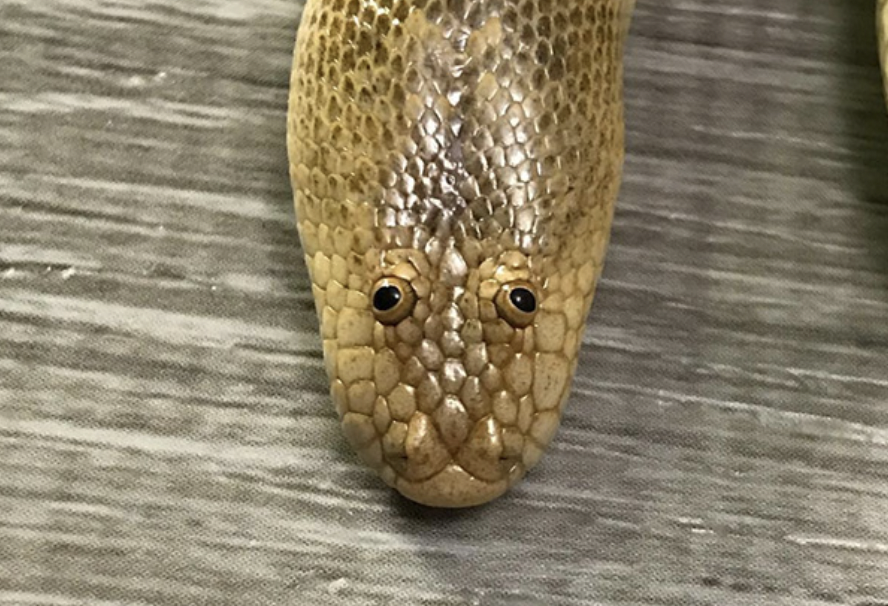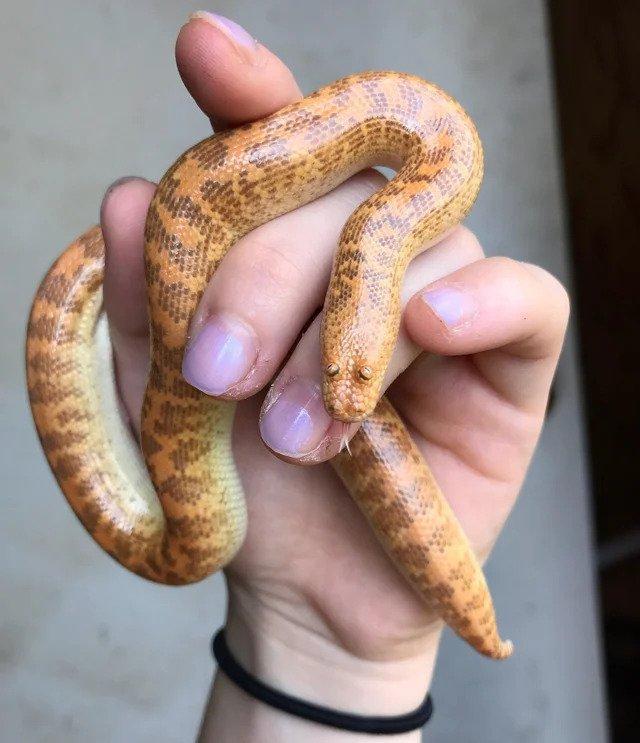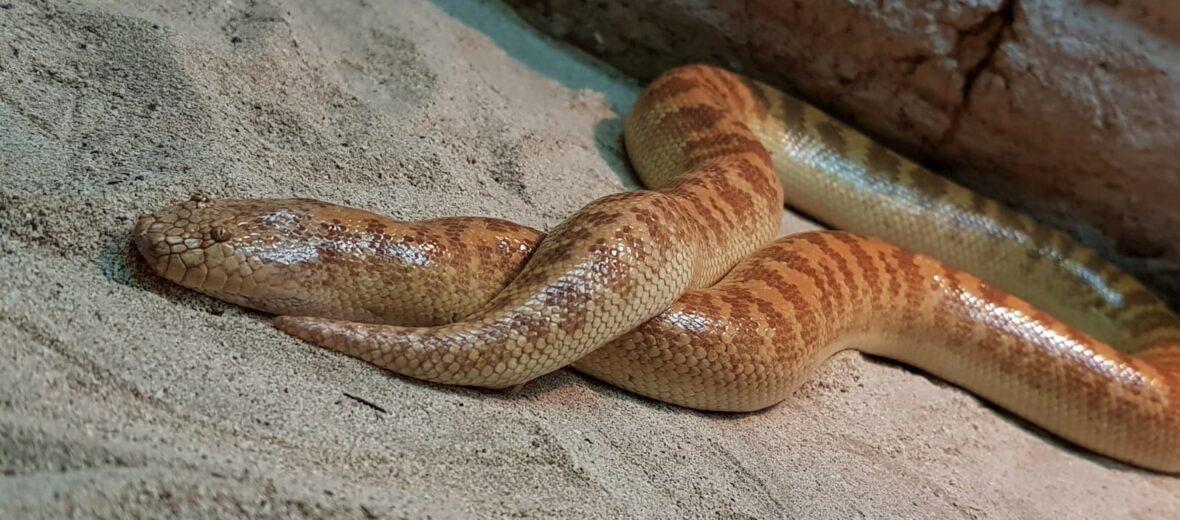Arabian sand boa, a captivating creature of the desert, has long intrigued reptile enthusiasts and researchers alike. This remarkable snake is not only unique in its appearance but also plays an essential role in the ecosystem. Native to the arid regions of the Middle East, the Arabian sand boa continues to captivate the attention of nature lovers worldwide.
As we delve into the life of this enigmatic snake, we'll uncover its fascinating behaviors, adaptations, and the challenges it faces in the wild. With its distinct physical traits and secretive nature, the Arabian sand boa is a species worth exploring for anyone fascinated by the wonders of the animal kingdom.
This comprehensive guide will take you on a journey through the world of the Arabian sand boa. From its habitat and diet to its role in the ecosystem, we'll cover everything you need to know about this incredible creature. Let's begin our exploration of the Arabian sand boa and discover why it deserves our admiration and protection.
Read also:Downloadhub Your Ultimate Destination For Digital Downloads
Table of Contents
- Introduction to Arabian Sand Boa
- Natural Habitat and Distribution
- Physical Traits and Characteristics
- Diet and Feeding Habits
- Behavioral Patterns
- Reproduction and Life Cycle
- Conservation Status and Threats
- Role in the Ecosystem
- Arabian Sand Boa in the Pet Trade
- Interesting Facts About Arabian Sand Boa
Introduction to Arabian Sand Boa
The Arabian sand boa (Eryx jayakari) is a non-venomous snake species native to the deserts of the Arabian Peninsula. Its small size and burrowing habits make it a fascinating subject for study. Measuring between 40 and 60 centimeters in length, the Arabian sand boa is perfectly adapted to life in sandy environments.
Unique Adaptations
This snake possesses several unique adaptations that allow it to thrive in harsh desert conditions. Its cylindrical body and smooth scales help it move effortlessly through sand, while its eyes and nostrils are positioned on the top of its head to avoid sand accumulation. These features make the Arabian sand boa a master of camouflage and concealment.
Natural Habitat and Distribution
The Arabian sand boa primarily inhabits sandy deserts, dunes, and arid regions across the Arabian Peninsula. It can be found in countries such as Saudi Arabia, Oman, Yemen, and the United Arab Emirates. The species prefers loose, sandy soils where it can burrow and remain hidden from predators and extreme temperatures.
Habitat Preferences
While the Arabian sand boa is most commonly associated with sandy deserts, it can also be found in rocky areas and scrublands. Its ability to adapt to different environments makes it a resilient species capable of surviving in some of the harshest climates on Earth.
Physical Traits and Characteristics
The Arabian sand boa is characterized by its stout body, small head, and short tail. Its coloration varies from light brown to yellowish, with dark blotches along its back that provide excellent camouflage in sandy environments. The snake's eyes are small and bead-like, and its tongue is forked, allowing it to detect chemical cues in its surroundings.
- Body length: 40-60 cm
- Weight: 100-200 grams
- Coloration: Light brown to yellowish with dark blotches
Diet and Feeding Habits
The Arabian sand boa is a carnivorous predator that primarily feeds on small mammals, birds, and reptiles. It uses its powerful muscles to constrict its prey, suffocating it before consumption. The snake's ambush hunting strategy involves remaining buried in the sand, waiting patiently for unsuspecting prey to pass by.
Read also:Unveiling The Truth About Xvideo A Comprehensive Guide
Feeding Frequency
In the wild, the Arabian sand boa may go several weeks between meals, depending on the availability of prey. In captivity, it is typically fed once a week to ensure proper nutrition and health.
Behavioral Patterns
Arabian sand boas are nocturnal creatures, meaning they are most active during the night. During the day, they remain buried in the sand to avoid the intense desert heat. This burrowing behavior also helps them conserve moisture and avoid dehydration.
Social Behavior
Like most snakes, the Arabian sand boa is a solitary animal that interacts with others primarily during the breeding season. Outside of this period, individuals tend to avoid contact with one another, preferring to remain hidden and secluded.
Reproduction and Life Cycle
The Arabian sand boa is an ovoviviparous species, meaning it gives birth to live young rather than laying eggs. After a gestation period of approximately three to four months, females give birth to a litter of 5-15 young. The offspring are fully independent at birth and must fend for themselves from the start.
Breeding Season
Reproduction typically occurs during the cooler months of the year, when temperatures are more favorable for mating and gestation. Male Arabian sand boas engage in combat to establish dominance and secure mating rights with females.
Conservation Status and Threats
Currently, the Arabian sand boa is not considered endangered; however, habitat destruction and the pet trade pose significant threats to its population. Urbanization and agricultural expansion in the Arabian Peninsula have led to the loss of suitable habitat for this species. Additionally, the demand for exotic pets has contributed to the illegal capture and trade of Arabian sand boas.
Conservation Efforts
Efforts to protect the Arabian sand boa include the establishment of protected areas and stricter regulations on the pet trade. Public awareness campaigns aim to educate people about the importance of conserving this unique species and its fragile desert habitat.
Role in the Ecosystem
The Arabian sand boa plays a crucial role in maintaining the balance of its ecosystem. As a predator, it helps control populations of small mammals and other prey species. In turn, this contributes to the health and stability of the desert environment, ensuring the survival of countless other organisms.
Predators and Competitors
Despite its adaptations, the Arabian sand boa is not without predators. Larger birds of prey, such as falcons and eagles, may hunt these snakes, while competition for food exists among other desert predators like foxes and mongooses.
Arabian Sand Boa in the Pet Trade
The Arabian sand boa has gained popularity in the pet trade due to its docile nature and relatively easy care requirements. However, the capture and sale of wild individuals can have detrimental effects on wild populations. Responsible pet ownership and sourcing from reputable breeders are essential to ensure the sustainability of this species.
Caring for Arabian Sand Boas
For those considering keeping an Arabian sand boa as a pet, it is important to provide a suitable enclosure with appropriate temperature and humidity levels. A substrate that allows for burrowing, such as sand or coconut fiber, is recommended. Regular veterinary check-ups and a balanced diet are also crucial for maintaining the health of these animals in captivity.
Interesting Facts About Arabian Sand Boa
Here are some intriguing facts about the Arabian sand boa:
- It can survive for extended periods without water due to its efficient moisture conservation.
- The Arabian sand boa has been observed "swimming" through sand, using a side-to-side motion similar to aquatic swimming.
- Its small eyes and specialized nostrils allow it to remain almost completely buried while still being able to detect prey.
- This species is capable of living up to 20 years in captivity with proper care.
Conclusion
The Arabian sand boa is a remarkable species that has adapted beautifully to life in the desert. From its unique physical traits to its fascinating behaviors, this snake is a testament to the resilience and diversity of life on Earth. By understanding and appreciating the Arabian sand boa, we can work towards its conservation and the preservation of its natural habitat.
We encourage you to share this article with others who may be interested in learning more about the Arabian sand boa. Your support and awareness can make a significant difference in the protection of this incredible species. For more information on reptiles and other wildlife, explore our other articles and resources available on our website.


